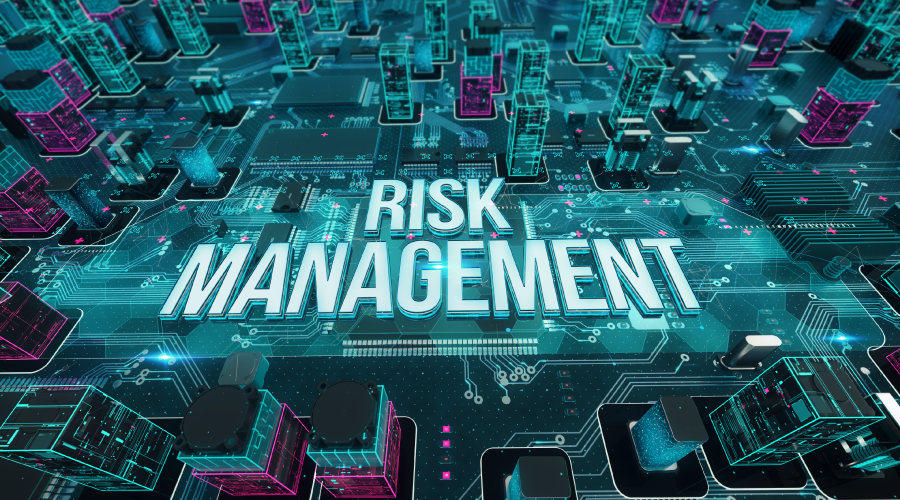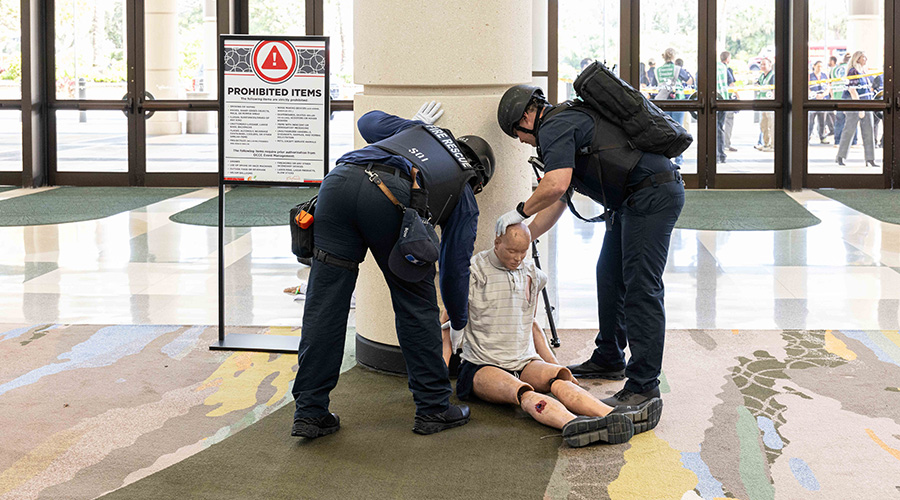5 Risk Mitigation Strategies for Facility Managers in a Hard Market
The commercial real estate market continues to present challenges, but facility managers can help navigate through shifting attitudes by focusing on best practices in property risk management.
By James “Chip” Stuart, Contributing Writer
As the commercial real estate industry continues to weather post-pandemic economic shifts, facility managers are playing an increasingly important role helping building owners and operators manage and mitigate property risks.
Changes in attitudes toward commercial real estate today are hitting virtually all sectors, as return-to-office plans remain in flux, restaurants shrink footprints in response to robust takeout and delivery demands, and online purchases curb appetite for retail space.
As if these headwinds weren’t challenging enough, 18 separate billion-dollar weather and climate disasters affected the United States in 2022, according to the National Oceanic and Atmospheric Administration. Rising severity and frequency of catastrophe claims across the country have led to a hard insurance market, causing supply to contract and premiums to rise.
Claims, inflation, supply chain challenges, and outdated property valuations have caused rebuilding costs to rise beyond what insurers priced policies to cover. In times like these, facility managers can be a strong asset for their building owners and operators, grounding them in facilities risk management practices that can help protect their property, their people and their profits.
Having well-maintained properties and taking steps to identify and mitigate risks can help avoid costly claims and secure coverage at acceptable rates. Here are some proven business continuity strategies facility managers can use to keep their buildings in order.
1.) Make preventive maintenance part of your operating culture.
Develop a regular and formal schedule for inspection, testing and maintenance of key equipment and systems, including HVAC systems, electrical equipment, and fire protection systems. Preventive maintenance software can help track and proactively manage maintenance activities.
Conduct regular inspections to detect potential risks, such as broken handrails or loose rugs, which could become hazards. Proactively replacing equipment, such as old electric panels, can help avoid the risk of fire. These measures can help improve building safety, avoid costly emergency repairs and reduce the likelihood of claims.
2.) Implement water damage mitigation plans.
Losses from water damage are the most common cause of property insurance claims. Smart water sensors can detect leaks and send facility managers alerts about a potential problem before it becomes an expensive claim, which can be especially valuable if the property is unoccupied or vacant.
Facilities managers that develop and implement water damage prevention and mitigation plans can help protect the facilities they manage. Key components include:
- installing shut-off valves
- understanding how to isolate water leaks
- ensuring functional sewer lines and sump pumps
- scheduling inspection and maintenance of the plumbing system, the boiler and any other machinery that harnesses water
3.) Plan for emergencies.
Creating a business continuity plan can help facilities managers prepare for emergencies — and recover more quickly if they do occur. It starts with identifying the threats or risks that a building may encounter due to location. Possible crisis scenarios include fire, earthquake, flood, windstorm, workplace violence, or terrorism. In the course of planning, facility managers may identify building modifications that could protect against potential risks, such as installing fortified windows to protect against hurricane-strength winds.
It’s important to develop a communications plan in the event of an emergency, so you can contact and mobilize building occupants and help them safely evacuate or stay a safe distance away from the building. Routine testing and updating the plan, or after any critical changes to the facility or to key employees, can help ensure that it will be ready if needed.
4.) Evaluate and enhance safety and security.
A comprehensive safety and security audit program helps ensure the physical safety of building occupants, including from the threat of workplace violence. Facility managers can implement appropriate security measures and a plan for first responders to be able to respond quickly in the event of an emergency.
Facility managers can also create a violence prevention plan as part of their overall security planning. Other premises security considerations include training maintenance personnel on identifying hazards or risks and fixing them before they cause losses. Facility managers should conduct an annual review of this program.
A detailed risk assessment can help identify opportunities to increase safety and mitigate potential hazards. For example, installing proper drainage, signage, lighting and handrails can make parking lots safer and avoid instances like slip and fall claims. Where needed, the plan should also include building security with cameras, access control or with a third-party security team.
5.) Vet contractors and transfer risk.
In addition to thoroughly vetting all contractors, facility managers can transfer risk to a third party via contract agreements. This can help protect the building entity from becoming liable from claims stemming from work done by third-party vendors on the premises.
Conduct a diligent review of third-party policies. In addition to the certificate of insurance, ask for a full copy of the contract and potential sub-contractor’s insurance policies.
Consider greater limits for high-hazard work. When things go wrong, the liability can be catastrophic. Consider asking the contractor to take out a policy with higher limits for projects with high hazards, such as major demolition, elevator modernization or operations involving a crane.
Vet vendors. Facility managers can establish relationships with third-party vendors now, ahead of potentially catastrophic situations, when there might not be adequate time to review insurance policies or appropriately vet them.
Make sure there’s an official contract in place that transfers risk to the contractor in writing. Having a contract that stipulates the contractor’s job responsibilities and liability agreement can protect the building owner from being on the hook for any damages.
Know your numbers and tell your story.
Even after a loss occurs, facility managers can help reduce risk. If there were previous losses, document the plan to help prevent them in the future, such as adding security cameras to monitor areas with multiple incidents. Doing a root cause analysis can help understand loss trends and steps that can be implemented to prevent them in the future.
Working closely with your insurance carrier can also help improve future outcomes. Facility managers can establish a culture of reporting losses quickly, documenting them thoroughly and sharing video footage of the damage and actual crime when available. Cleaning up any damage, boarding up windows and taking any other steps to protect your property after an incident can help make sure claims are resolved quickly and at the lowest possible cost.
Facility managers also should track and report the conditions and upgrades to their properties to their broker and carrier when upgrading electrical wiring, roofing and plumbing. With the dates of these three key upgrades on record, underwriters will not default to the worst-case scenario and the highest premium rate.
James “Chip” Stuart is the corporate Chief Sales Officer and Practice Leader for global insurance brokerage Hub International’s real estate specialty in North America.
Related Topics:












